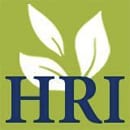- Woody plants database – Profiles more than 370 trees, shrubs, vines and groundcovers. Search feature helps match plants to site characteristics (light, USDA Hardiness Zone, salt tolerance, soil pH and moisture) and plant characteristics (deciduous vs. evergreen and plant size), as well as botanical and common name search.
- Recommended Urban Trees: Site Assessment and Tree Selection for Stress Tolerance – Profiles more than 90 trees that can stand up to the rigors of tough urban environments, including small trees that can grow under overhead utility wires. Also includes a site assessment checklist, transplanting guide and helpful lists of trees grouped by site or planting conditions.
- Ithaca City Parks Tree Tours – Maps and descriptions of trees for four tours: Southside, Fall Creek, Stewart Park and Dept. of Public Works.
- Tree ID Guide for Common Urban Trees in New York State and the Northeast – Hard copy only. 76-page, fully illustrated guide helps people with little or no experience to identify common urban trees throughout the year. Trees are organized by common name and a simple visual glossary is included to point out important features. No online version. $18. (Order 10 or more and pay $16 each.) Send check (payable to Cornell University) to: Nina Bassuk, Horticulture Section, Cornell University, 135 Plant Science Building Ithaca, NY 14853 USA Questions? Email nlb2@cornell.edu
- Woody Shrubs for Stormwater Retention Practices (Northeast and Mid-Atlantic Regions) — Second Edition [11 MB .pdf] – Woody shrubs provide low-maintenance, attractive cover for stormwater retention and infiltration practices such as filter strips, swales and rain gardens. This 57-page guide details site assessment and design considerations for those practices and profiles more than 35 woody shrub species that can tolerate both dry and periodically saturated soil conditions typical of retention areas. Print quality version [45 MB .pdf]. See also: Rethinking runoff: Shrubs and stormwater, Shrubs that Stand up to Stormwater, and Stormwater retention practices: woody shrubs to the rescue
- Deciduous Woody Groundcovers [2.7 MB .pdf] – 15-page booklet describes how low-growing shrubs and woody plants can provide attractive, protective cover for gardens, slopes and many difficult sites.
- Site assessment: The key to sustainable urban tree establishment – Why site assessments are key to sustainable urban tree establishment. Open Access Government, October 2019.
- Tough Trees for Tough Sites – 23-minute online video aids in tree selection and site selection in the urban landscape. Follows a real-life tree planting project in the city of Ithaca, N.Y.
- A Cornell Campus Walk: Recommended Urban Trees [2.5 MB .pdf] – The natural beauty of the Cornell campus is rightly celebrated. Stately trees strategically planted around the buildings and along the streets and plazas contribute to that reputation. This 31-page booklet is your guide to an all-season campus tree walk designed to help you to learn about trees that can withstand tough urban situations.
- Visual Similarity and Biological Diversity: Street Tree Selection and Design [560 K .pdf] – 13-page publication helps with choice of species for street tree plantings to balance need for genetic diversity and need for uniformity in design. See also: Bassuk, N. Creating urban tree biodiversity within a uniform street tree landscape. Open Access Government , February 1, 2019.
- Greening the inner city: How do we choose the best trees? [Open Access Government, May, 2018] – Nina Bassuk details four principles of urban tree selection: Trees should be pest-resistant and adapted to urban conditions, they should be highly diverse (including native and non-native species but avoiding invasives), they should meet functional and design objectives, and they should match management limitations.
- A focus on plant science: The biology of autumn leaf colour. [Open Access Government, January 2020, pages 356-357] – Nina Bassuk details an absorbing aspect of plant science that concerns the biology of autumn leaf colour and deciduous trees of the northern hemisphere.
- Moving Beyond the Natives/Exotics Debate [Urban Habitats, March 2012]- In heavily urbanized areas — with degraded soils, poor drainage, high pH soils, elevated temperatures, etc — it may not be feasible to cultivate plant communities of natives found in nearby natural areas. A mix of natives and exotics may be the best option.
- Building better oaks for the urban environment – Article explores how hybridizing oaks will can produce varieties that can stand up to the tough environmental conditions found in cities.
- Read UHI journal articles on: plant selection | site analysis and environmental stress
Videos
Take a hike:
- The Sustainable Landscapes Trail – Highlights the sustainable design and ecosystems services of green infrastructure across the Cornell campus. Features bioswales, CUSoil plantings, open spaces, natural areas, and more.
- ‘Urban Eden’ plant walks – Topical walks on campus for students in Creating the Urban Eden: Woody Plant Selection, Design, and Landscape Establishment (PLHRT/LA 4910/4920).
- Stewart Park Tree Tour– Use your mobile device to access information via QR codes for 22 trees in this City of Ithaca park on the south shore of Cayuga Lake.





